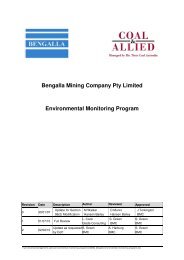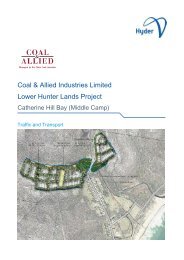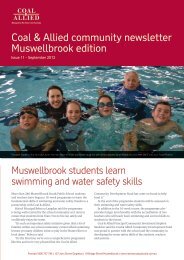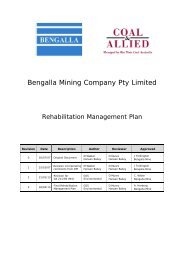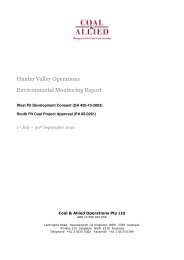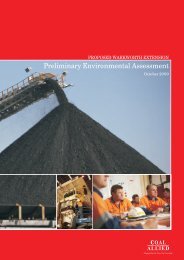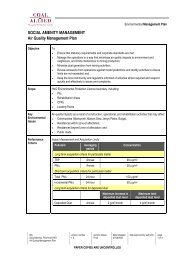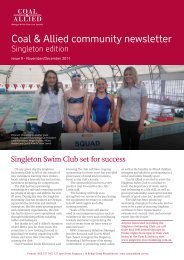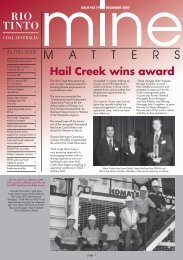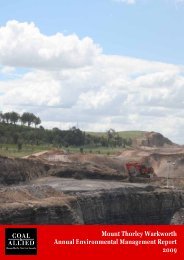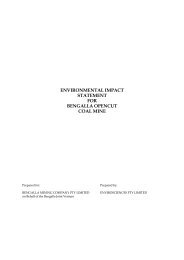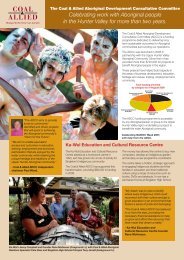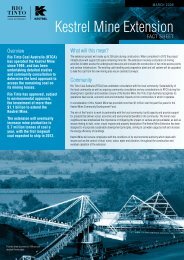Bengalla Mining Company Pty Limited - Rio Tinto Coal Australia
Bengalla Mining Company Pty Limited - Rio Tinto Coal Australia
Bengalla Mining Company Pty Limited - Rio Tinto Coal Australia
You also want an ePaper? Increase the reach of your titles
YUMPU automatically turns print PDFs into web optimized ePapers that Google loves.
Rehabilitation & Landscape<br />
Management Plan<br />
5.0 Mine Closure Plan<br />
As discussed in Section 1.3, this RLMP provides a preliminary conceptual Mine Closure<br />
Plan. A detailed Mine Closure Plan will be developed at least five years prior to mine<br />
closure, however, preliminary design criteria and environmental management techniques<br />
for mine closure are provided below utilising available information.<br />
5.1 Objectives<br />
The key objective of site rehabilitation is to achieve an optimum post-mining land<br />
capability suitable for supporting a combination of grazing and native habitat land use.<br />
Detailed rehabilitation objectives and completion criteria, consistent with these<br />
post-mining land use objectives are listed in Table 4.<br />
5.2 Post-<strong>Mining</strong> Land Use Options<br />
Investigations have been undertaken in relation to a number of post-mining land use<br />
options within the DA Boundary (GSSE, 2004). Extensive face-to-face consultation was<br />
undertaken with over 60 near neighbours, regulators and community representatives<br />
during preparation of the <strong>Bengalla</strong> SEE. When stakeholders were asked during this<br />
consultation the majority stated that they would prefer a more natural looking landform<br />
with dense plantings of native trees and shrubs. This feedback was considered in the<br />
current selection of the conceptual post-mining land use option.<br />
The investigations were undertaken to determine feasible land uses on rehabilitated land<br />
considering land slope, class, water requirements and soil types. The potential land uses<br />
that were investigated included: cattle grazing, viticulture, industrial estates, commercial<br />
forestry, and other commercial/community enterprises. These potential land uses were<br />
then evaluated based on selection criteria such as:<br />
• Community and stakeholder acceptance;<br />
• Health and safety considerations;<br />
• Potential environmental impacts;<br />
• Regulatory requirements and legal liability; and<br />
• Contribution to the local economy and employment.<br />
Although viticulture was assessed and determined to substantially assist in long-term<br />
final landform stability and minimise noise, dust and odour impacts on near neighbours,<br />
viticulture as a post-land use option was considered to be an incompatible broad<br />
community land use which would only moderately satisfy legal and regulatory<br />
requirements. The investigations found that the physical and chemical characteristics of<br />
the shaped and rehabilitated overburden would be incompatible with the needs of<br />
Ref: 071025 bmc rehabilitation & landscape mp Page 20



